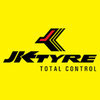
i
UNO
Minda
Filter interviews by
UNO Minda Associate Interview Questions and Answers
10 Interview questions
PNP and NPN are types of bipolar junction transistors commonly used in electronic circuits.
PNP transistor has a layer of N-type semiconductor between two layers of P-type semiconductor, while NPN transistor has a layer of P-type semiconductor between two layers of N-type semiconductor.
In a PNP transistor, current flows from the emitter to the base and then to the collector, while in an NPN transistor, current flow...
There are various types of sensors used for different purposes.
Temperature sensors (e.g. thermocouples, thermistors)
Pressure sensors (e.g. piezoelectric sensors)
Motion sensors (e.g. accelerometers, gyroscopes)
Proximity sensors (e.g. ultrasonic sensors)
Light sensors (e.g. photodiodes, phototransistors)
PLC stands for Programmable Logic Controller, which is a digital computer used for automation of electromechanical processes.
PLC is used to control machinery in manufacturing processes, such as assembly lines, robotic devices, or any activity that requires high reliability control.
It is programmed using a specialized computer language, typically ladder logic or function block diagram.
PLCs are commonly used in indu...
Prepare a pH buffer solution as per defined standard in tablet.
Determine the required pH value and buffer capacity
Select the appropriate buffer system and calculate the required amounts of buffer components
Dissolve the buffer components in water and adjust the pH as necessary
Check the pH and adjust if necessary
Filter the solution and store in a clean container
Use a calibrated pH meter to verify the pH of the solut...
To prepare 0.1 N H2SO4 & NaOH, calculate the required amount of solute and dissolve it in distilled water.
Calculate the molar mass of H2SO4 and NaOH
Determine the required amount of solute using the formula: N = (W/M) x (1000/V)
Dissolve the calculated amount of solute in distilled water to make 1 liter of solution
Standardize the solution using a primary standard
Use a burette to measure the volume of solution needed...
To cross verify 0.1 normality H2SO4, use a standard solution of NaOH and an indicator.
Prepare a standard solution of NaOH of known concentration.
Add a few drops of an indicator such as phenolphthalein to the H2SO4 solution.
Titrate the H2SO4 solution with the NaOH solution until the endpoint is reached.
The endpoint is when the indicator changes color, indicating that all the H2SO4 has reacted with the NaOH.
Calculat...
Detection and prevention poka-yoke refers to the use of techniques to identify and prevent errors in a process.
Poka-yoke is a Japanese term for mistake-proofing
Detection poka-yoke involves identifying errors as they occur
Prevention poka-yoke involves designing processes to prevent errors from occurring
Examples of poka-yoke include using checklists, color-coding, and physical barriers
Poka-yoke can improve quality, ...
Decrease in pH can occur due to various factors in conversion coating.
Decrease in pH can be caused by the addition of an acid or acidic solution.
Presence of reactive metals in the coating can lead to a decrease in pH.
Contamination by organic materials or impurities can also lower the pH.
Chemical reactions during the conversion coating process may result in pH decrease.
Examples of conversion coatings include phosph...
TTR stands for Total Thickness Range and is required for powder coating process to ensure proper adhesion and durability.
TTR is the range of thickness of the substrate and any coatings applied to it
It is important for powder coating as it ensures proper adhesion and durability
If the TTR is too large, the coating may not adhere properly or may crack and peel over time
Examples of substrates with varying TTR include ...
A relay holding circuit diagram is used to keep the relay in the energized state even after the control signal is removed.
The circuit typically includes a holding contact that maintains the relay coil energized.
A latching relay can also be used for holding without continuous power supply.
Examples: ladder logic diagram with a holding contact, latching relay circuit diagram.
UNO Minda Associate Interview Experiences
2 interviews found
I applied via Recruitment Consulltant and was interviewed before Oct 2022. There were 3 interview rounds.

(2 Questions)
- Q1. Where are you living?
- Q2. Why are you leaving your last company?
(4 Questions)
- Q1. Circuit diagram of relay holding.
- Ans.
A relay holding circuit diagram is used to keep the relay in the energized state even after the control signal is removed.
The circuit typically includes a holding contact that maintains the relay coil energized.
A latching relay can also be used for holding without continuous power supply.
Examples: ladder logic diagram with a holding contact, latching relay circuit diagram.
- Q2. What is PNP and NPN
- Ans.
PNP and NPN are types of bipolar junction transistors commonly used in electronic circuits.
PNP transistor has a layer of N-type semiconductor between two layers of P-type semiconductor, while NPN transistor has a layer of P-type semiconductor between two layers of N-type semiconductor.
In a PNP transistor, current flows from the emitter to the base and then to the collector, while in an NPN transistor, current flows fro...
- Q3. How many type of sensor?
- Ans.
There are various types of sensors used for different purposes.
Temperature sensors (e.g. thermocouples, thermistors)
Pressure sensors (e.g. piezoelectric sensors)
Motion sensors (e.g. accelerometers, gyroscopes)
Proximity sensors (e.g. ultrasonic sensors)
Light sensors (e.g. photodiodes, phototransistors)
- Q4. What is PLC and full form?
- Ans.
PLC stands for Programmable Logic Controller, which is a digital computer used for automation of electromechanical processes.
PLC is used to control machinery in manufacturing processes, such as assembly lines, robotic devices, or any activity that requires high reliability control.
It is programmed using a specialized computer language, typically ladder logic or function block diagram.
PLCs are commonly used in industrie...
Interview Preparation Tips
Skills evaluated in this interview
I applied via Company Website
(6 Questions)
- Q1. What is mean of TTR & why required for powder coating process ?
- Q2. What is mean of detection & prevention pokayoke?
- Q3. Which condition PH decrease in conversion coating?
- Ans.
Decrease in pH can occur due to various factors in conversion coating.
Decrease in pH can be caused by the addition of an acid or acidic solution.
Presence of reactive metals in the coating can lead to a decrease in pH.
Contamination by organic materials or impurities can also lower the pH.
Chemical reactions during the conversion coating process may result in pH decrease.
Examples of conversion coatings include phosphating...
- Q4. How to prepared 0.1 N H2so4 & Naoh ?
- Ans.
To prepare 0.1 N H2SO4 & NaOH, calculate the required amount of solute and dissolve it in distilled water.
Calculate the molar mass of H2SO4 and NaOH
Determine the required amount of solute using the formula: N = (W/M) x (1000/V)
Dissolve the calculated amount of solute in distilled water to make 1 liter of solution
Standardize the solution using a primary standard
Use a burette to measure the volume of solution needed for ...
- Q5. How to cross verify 0.1 normality H2so4?
- Ans.
To cross verify 0.1 normality H2SO4, use a standard solution of NaOH and an indicator.
Prepare a standard solution of NaOH of known concentration.
Add a few drops of an indicator such as phenolphthalein to the H2SO4 solution.
Titrate the H2SO4 solution with the NaOH solution until the endpoint is reached.
The endpoint is when the indicator changes color, indicating that all the H2SO4 has reacted with the NaOH.
Calculate the...
- Q6. How to prepared ph buffer solution as per defined standard in tablet?
- Ans.
Prepare a pH buffer solution as per defined standard in tablet.
Determine the required pH value and buffer capacity
Select the appropriate buffer system and calculate the required amounts of buffer components
Dissolve the buffer components in water and adjust the pH as necessary
Check the pH and adjust if necessary
Filter the solution and store in a clean container
Use a calibrated pH meter to verify the pH of the solution
Interview Preparation Tips
Top trending discussions






Interview questions from similar companies

Department and work related question.
(2 Questions)
- Q1. Personal information
- Q2. Education related question?

I applied via Walk-in and was interviewed in Mar 2022. There were 2 interview rounds.

Interview Preparation Tips

I applied via Walk-in and was interviewed before Feb 2021. There were 2 interview rounds.

(2 Questions)
- Q1. Depends on experience
- Q2. Related to systematic approach
- Ans. Problem solving tools, OEE, FPY, Root cause analysis. 14Q, 5S
Interview Preparation Tips

I applied via Referral and was interviewed before Sep 2020. There were 3 interview rounds.
Interview Questionnaire
1 Question
- Q1. Please explain about your profile
- Ans.
Experienced Senior Engineer with a strong background in software development, project management, and team leadership.
Over 10 years of experience in software engineering, specializing in full-stack development.
Led a team of 5 engineers in developing a scalable e-commerce platform, resulting in a 30% increase in sales.
Proficient in multiple programming languages including Java, Python, and JavaScript.
Implemented Agile m...
Interview Preparation Tips
Be bold in your explanations.
Questions mainly fall from your profile explanation.
Try to tell what you have worked with.

I applied via Naukri.com and was interviewed in Dec 2020. There were 3 interview rounds.
Interview Questionnaire
1 Question
- Q1. Core Java, J2EE
Interview Preparation Tips

Senior Engineer Interview Questions & Answers
Samvardhana Motherson Groupposted on 1 Jun 2020
I applied via Naukri.com and was interviewed in May 2020. There were 4 interview rounds.
Interview Questionnaire
3 Questions
- Q1. What are the die casting and machining defects?
- Ans.
Die casting and machining defects are common in manufacturing processes.
Die casting defects include porosity, shrinkage, cold shuts, and flash.
Machining defects include burrs, chatter marks, and tool marks.
Die casting defects can be caused by improper temperature, pressure, or metal flow.
Machining defects can be caused by dull tools, improper speeds and feeds, or poor fixturing.
Defects can lead to part failure, reduced...
- Q2. What is the formula of filling and high speed ratio?
- Ans.
Filling and high speed ratio formula is used to calculate the filling time of a container with a specific volume of liquid at a given flow rate.
Filling and high speed ratio formula is V/Q
V is the volume of the container and Q is the flow rate of the liquid
The formula is used to determine the time it takes to fill a container with a specific volume of liquid at a given flow rate
The higher the flow rate, the faster the c...
- Q3. Why do u want to join Motherson?
Interview Preparation Tips

Senior Engineer Interview Questions & Answers
Samvardhana Motherson Groupposted on 19 Jan 2021
I appeared for an interview in Jul 2020.
Interview Questionnaire
1 Question
- Q1. Waht is your achievements
- Ans.
I have achieved several milestones throughout my career as a Senior Engineer.
Successfully led a team of engineers to develop and implement a new software system, resulting in a 20% increase in efficiency.
Received recognition for designing and implementing a cost-effective solution that reduced production downtime by 30%.
Contributed to the development of a groundbreaking technology that revolutionized the industry, lead...
Interview Preparation Tips

(2 Questions)
- Q1. Kind of t codes using in SAP for MM module ?
- Ans.
Various t-codes are used in SAP MM module for different purposes.
MM01 - Create Material Master
MM02 - Change Material Master
MM03 - Display Material Master
ME21N - Create Purchase Order
ME22N - Change Purchase Order
ME23N - Display Purchase Order
MIGO - Goods Movement
MIRO - Invoice Verification
MB51 - Material Document List
ME2N - Purchase Orders by PO Number
ME2M - Purchase Orders by Material
ME2L - Purchase Orders by Vendor
ME2...
- Q2. Import material planning and purchase processes
(1 Question)
- Q1. Detailed question on previous job responsibilites
Interview Preparation Tips
Skills evaluated in this interview
UNO Minda Interview FAQs
Tell us how to improve this page.
UNO Minda Interviews By Designations
- UNO Minda Assistant Manager Interview Questions
- UNO Minda Quality Engineer Interview Questions
- UNO Minda Graduate Engineer Trainee (Get) Interview Questions
- UNO Minda Senior Executive Interview Questions
- UNO Minda Senior Engineer Interview Questions
- UNO Minda Deputy Manager Interview Questions
- UNO Minda Manufacturing Engineer Interview Questions
- UNO Minda Production Engineer Interview Questions
- Show more
Interview Questions for Popular Designations
Overall Interview Experience Rating
based on 6 interview experiences
Difficulty level
Duration
Interview Questions from Similar Companies
UNO Minda Associate Reviews and Ratings
based on 90 reviews
Rating in categories
|
Assistant Manager
576
salaries
| ₹5.8 L/yr - ₹14 L/yr |
|
Senior Executive
510
salaries
| ₹4 L/yr - ₹9 L/yr |
|
Deputy Manager
298
salaries
| ₹11 L/yr - ₹18.9 L/yr |
|
Senior Engineer
238
salaries
| ₹4.1 L/yr - ₹8.9 L/yr |
|
Associate
229
salaries
| ₹1.5 L/yr - ₹4.4 L/yr |

Bosch

Samvardhana Motherson Group

MRF Tyres

Apollo Tyres
- Home >
- Interviews >
- UNO Minda Interview Questions











